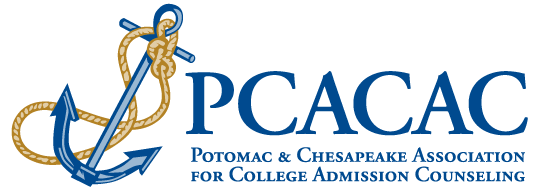As part of the PCACAC AP Committee’s desire to proactively
discuss ethics, we will be sending out monthly “case studies.” In these cases,
we will offer a situation and discuss whether the issue is in compliance with
NACAC’s Statement of Principles of Good Practices (SPGP). Thanks to Dale
Bittinger, Assistant Vice Provost for Admissions and Orientation at UMBC (MD) and PCACAC AP
Committee Vice-Chair, for this month’s case. If you have a question about a
situation or SPGP, please contact a member of the AP Committee.
April Case: A
student walks into her counselor’s office after attending an admitted student
day at Myperfect College and is excited to share how much she enjoyed the
program. The counselor replies that this
surprises her as she really thought Myperfect College was not as academically
rigorous and the students did not grow as much personally as at the student’s
other choice, Herfavorite College. The
counselor goes on to state that Herfavorite College invited her to fly out and
visit the college this past year and she could see many of her students
enrolling there. The counselor adds that
Myperfect College has had a number of changes in senior leadership over the
past few years and that some of the students from their high school did not
have a good experience while enrolled at Myperfect College.
Is this compliant with NACAC’s SPGP?
Discussion: According to NACAC’s SPGP Mandatory Practices
I A. 2, “All Members agree they will not use disparaging comparisons
of secondary or postsecondary institutions.” Furthermore, according to the
interpretations section of the SPGP, “Members will refrain from publicly disseminating
biased, unflattering and/or potentially inaccurate information about secondary
or postsecondary institutions, their admission criteria and/or their curricular
offerings.”
While many think of this section of the SPGP applying to
college admission officers recruiting students, it should be noted that section
I A addresses, “All members.” Therefore, school and non-school based counselors
should also be following this ethical guideline. The questions to consider are,
“Was this a disparaging comparison?” and “Was this publicly disseminating that
information?”
Conclusion: As
always, this is not as easy as it first seems. While the counselor may have had
good intentions to help her student, her negative inferences (“surprises her as
she really thought…not as academically rigorous and the students did not grow
as much…”) about Myperfect College would be unethical. However, another
statement (“number of leadership changes”) is factual and is not necessarily
disparaging. Finally, the concern that some students from the high school did
not have a good experience is in a gray area—it is factual but infers a
negative that may or may not be applicable.
The AP Committee might have a difficult time considering
sanctions as the comments were not made in a public forum. This situation,
though, would provide an opportunity for a member of the AP Committee to
discuss the issues with the counselor and help her better understand NACAC’s
SPGP.
Want to learn more about similar Ethical Situations? Attend
the “So What’s Ethical? Current Case Studies in Admissions Ethics” at the
PCACAC Conference on Monday, April 18.
If you wish to file a complaint, please complete a
NACAC Confidential Complaint form. All personal information will be kept
confidential, but the information will be forwarded to the appropriate
affiliate AP committee. This committee will follow up on the issue in order to
help the college work fairly with all students.
Want to review previous case studies?


